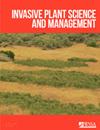Morphological traits for rapid and simple separation of native and introduced common reed (Phragmites australis)
IF 1.3
4区 生物学
Q3 PLANT SCIENCES
引用次数: 0
Abstract
Abstract Effective management of the introduced invasive grass common reed [Phragmites australis (Cav.) Trin. ex Steud.] requires the ability to differentiate between the introduced and native subspecies found in North America. While genetic tools are useful for discriminating between the subspecies, morphological identification is a useful complementary approach that is low to zero cost and does not require specialized equipment or technical expertise. The objective of our study was to identify the best morphological traits for rapid and simple identification of native and introduced P. australis. A suite of 22 morphological traits were measured in 21 introduced and 27 native P. australis populations identified by genetic barcoding across southern Ontario, Canada. Traits were compared between the subspecies to identify measurements that offered reliable, diagnostic separation. Overall, 21 of the 22 traits differed between the subspecies, with four offering complete separation: the retention of leaf sheaths on dead stems; a categorical assessment of stem color; the base height of the ligule, excluding the hairy fringe; and a combined measurement of leaf length and lower glume length. Additionally, round fungal spots on the stem occurred only on the native subspecies and never on the sampled introduced populations. The high degree of variation observed in traits within and between the subspecies cautions against a “common wisdom” approach to identification or automatic interpretation of intermediate traits as indicative of aberrant populations or hybridization. As an alternative, we have compiled the five best traits into a checklist of simple and reliable measurements to identify native and introduced P. australis. This guide will be most applicable for samples collected in the late summer and fall in the Great Lakes region but can also inform best practices for morphological identification in other regions as well.快速简便分离天然芦苇和引进芦苇的形态特征
摘要有效管理引进的入侵草普通芦苇需要有能力区分在北美发现的引进亚种和本地亚种。虽然遗传工具有助于区分亚种,但形态鉴定是一种有用的补充方法,成本低至零,不需要专门的设备或技术专长。本研究的目的是确定最佳的形态特征,以便快速、简单地鉴定本地和引进的P.australis。在加拿大安大略省南部通过遗传条形码鉴定的21个引进的和27个本地的澳大利亚P.australis种群中,测量了一套22个形态特征。对亚种之间的特征进行比较,以确定提供可靠诊断分离的测量结果。总的来说,22个性状中有21个在亚种之间存在差异,其中4个提供了完全分离:叶鞘在死茎上的保留;树干颜色的分类评估;叶舌的基部高度,不包括有毛的边缘;以及叶片长度和下部颖片长度的组合测量。此外,茎上的圆形真菌斑点只出现在本地亚种上,而从未出现在采样的引入种群上。在亚种内部和亚种之间观察到的性状高度变异,提醒人们不要采用“常识”方法来识别或自动解释中间性状,将其视为异常种群或杂交的指示。作为一种替代方案,我们将五种最佳性状汇编成一份简单可靠的测量清单,以识别本地和引进的澳大利亚P.australis。本指南最适用于夏末和秋季在大湖区采集的样本,但也可以为其他地区的形态学鉴定提供最佳实践。
本文章由计算机程序翻译,如有差异,请以英文原文为准。
求助全文
约1分钟内获得全文
求助全文
来源期刊

Invasive Plant Science and Management
PLANT SCIENCES-
CiteScore
2.20
自引率
9.10%
发文量
24
审稿时长
6-12 weeks
期刊介绍:
Invasive Plant Science and Management (IPSM) is an online peer-reviewed journal focusing on fundamental and applied research on invasive plant biology, ecology, management, and restoration of invaded non-crop areas, and on other aspects relevant to invasive species, including educational activities and policy issues. Topics include the biology and ecology of invasive plants in rangeland, prairie, pasture, wildland, forestry, riparian, wetland, aquatic, recreational, rights-of-ways, and other non-crop (parks, preserves, natural areas) settings; genetics of invasive plants; social, ecological, and economic impacts of invasive plants and their management; design, efficacy, and integration of control tools; land restoration and rehabilitation; effects of management on soil, air, water, and wildlife; education, extension, and outreach methods and resources; technology and product reports; mapping and remote sensing, inventory and monitoring; technology transfer tools; case study reports; and regulatory issues.
 求助内容:
求助内容: 应助结果提醒方式:
应助结果提醒方式:


